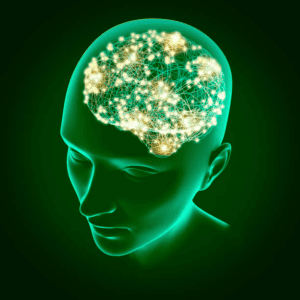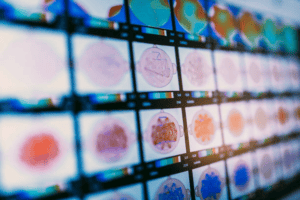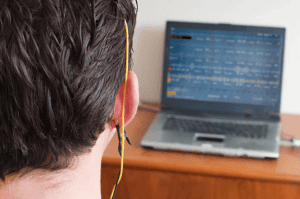
What is Neurofeedback?
There are many different ways of doing neurofeedback training. At Prosperity Counseling Services, we use QEEG guided neurofeedback training. QEEG-guided neurofeedback is based on normalizing dysregulated brain regions that relate to specific clinical presentation. Neurofeedback, often referred to as EEG biofeedback or brain wave training, is a type of biofeedback in which individuals are trained to improve their brain function.
Neurofeedback uses sensors to detect physical changes of the brain. Neurofeedback therefore involves placing small sensors on the scalp to see changes in a person’s brainwave activity. Precisely detecting brainwave activity allows it to be immediately
analyzed by a computer that then presents sound and video information based on the brain’s performance. Using this feedback, the individual learns to regulate or control his or her own brain states. This is helpful because the state of the brain has a strong influence on how the person thinks, acts, and feels, emotionally and physically.
Neurofeedback integrates clinical expertise with the best available research to address
behavioral, cognitive, and subjective functions related to brain activity, and therefore meets the American Psychological Association’s definition of an evidence-based intervention. Neurofeedback is non-invasive, does not involve surgery or medication, is neither painful nor embarrassing, and has long-lasting effects.
What Conditions Are Effectively Treated With Neurofeedback?
Research demonstrates that neurofeedback is an effective intervention for
-ADHD
-Trauma Recovery
-Autism Spectrum Disorder
-OCD
-Anxiety
-Depression
-Insomnia
-Addiction
-Traumatic Brain Injuries
-Athlete peak performance
-Performing artist peak performance
-Improve cognitive functioning all together
How is Neurofeedback Training Conducted?
 Neurofeedback is based on an objective assessment of brain activity and psychological functioning. This will include an initial quantitative EEG (qEEG) which records the brain’s electrical activity at multiple sites on the surface of the scalp and compares it to a database of healthy normal individuals the same age as the client. Once assessment has been completed, the practitioner develops a treatment protocol that specifies sites on the scalp and brain wave elements to be trained.
Neurofeedback is based on an objective assessment of brain activity and psychological functioning. This will include an initial quantitative EEG (qEEG) which records the brain’s electrical activity at multiple sites on the surface of the scalp and compares it to a database of healthy normal individuals the same age as the client. Once assessment has been completed, the practitioner develops a treatment protocol that specifies sites on the scalp and brain wave elements to be trained.
During training, sensors are placed on the scalp and then connected to a computer and sensitive equipment that detects, amplifies, and monitors specific brain activity. Brain activity measured this way is then used to play sound and visual information through the computer’s speakers and monitor so that the client almost immediately sees whether or not their brain is performing within a desired range. Based on this feedback of sound and visual information, and on practitioner guidance, the client gradually learns to produce changes in their brain patterns to improve their ability to think, feel, function physically, and act in ways they want.
Typically neurofeedback includes:
• Two or more training sessions per week
• Twenty to forty-five minutes of feedback per session
• Sound and visual feedback rewards for achieving training goals within sessions
Are there side effects?
When provided by a qualified professional, neurofeedback training produces few, if any,
negative side effects. Clients usually find neurofeedback to be an interesting, insightful, relaxing, and engaging experience.
How Long Will Training Take?
As with most forms of treatment, neurofeedback results may vary with each individual.
Neurofeedback training may require 20–40 sessions or more, depending upon the age of the client and the severity of his or her condition.
Investment:
 -Consultation: $175- 50-minutes long (normal session time)
-Consultation: $175- 50-minutes long (normal session time)
-Initial QEEG: $175- 30-45 minutes long
-QEEG Debrief and Treatment Planning: $175- 50-minutes long (normal session time)
-Training sessions: $150/session- 45 minutes long